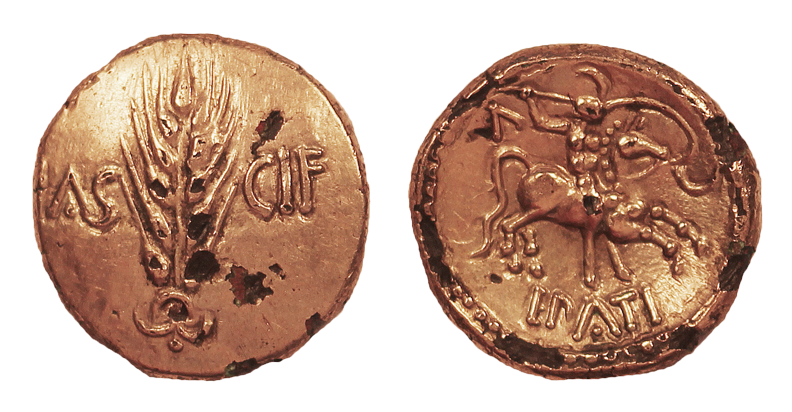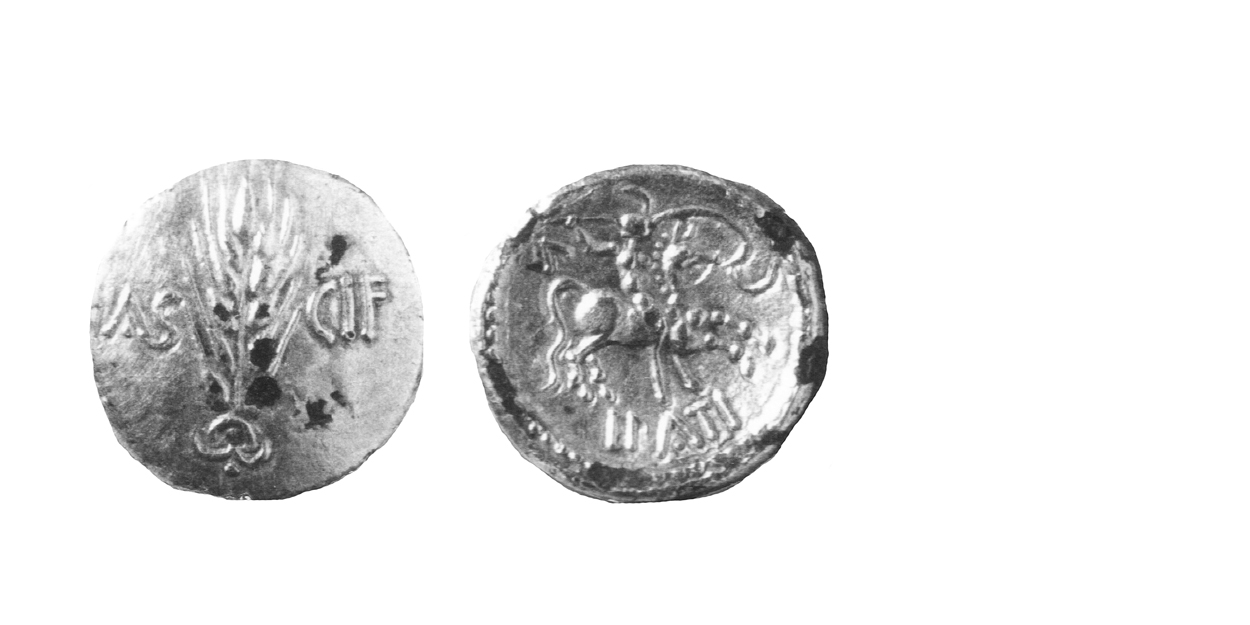
About the Coins
Function of the Coins (Info)
First Money Transactions
Before 100 B.C., trade between Britain and the Continent was largely controlled by the Armorican and Belgic tribes. The Romans were unlikely to have direct trading contacts of any magnitude. Coinage may have been a circulating medium in the trading ports. It could have facilitated exchange with partners on the Continent, thus serving as a special-purpose currency. This does not preclude the use of coins as gifts amongst the British elites.
Growing trade with the continent would have eventually required some money transactions well before the Gallic War. Extensive trade is well attested, with Roman luxury goods exchanged for raw materials and slaves. By 90 B.C., low value coins circulated in large quantities in Kent and further afield – the Cast Bronzes of the Cantii (149). Certainly these would not have been considered "prestige gifts". It has already been suggested the Cast Bronzes served as a form of special purpose money (150).
By 55 B.C., trading networks likely existed in the interior of Britain to procure war materiel for the struggle on the continent. Coins circulated in them and today great numbers are found throughout southern Britain. A money economy in the making was probable in this period – it would have facilitated trading.
After the Gallic War
After Caesar's invasion, the trading patterns changed. The Armorican trade was reduced and the Romans controlled that with the tribes in the southeast. Trade with the Romans would have created an impetus for the growth of a money economy in Britain. The appearance of small denomination coins in large quantities, particularly bronzes, argues this was exactly what happened (89).
Some evidence for a money economy
In the past, it was argued Britain never had a money economy, and the coins must have served some ritual purpose in the primitive Celtic society – perhaps as gifts among the elites. Before 100 B.C., this was likely true. However, there are other indicators that the coins eventually served a monetary function.
Metallurgy, metrology, statistics and typology all tell a different story today (81). The coins were struck to precise weights and the proportions of gold, silver and bronze were controlled by expert metalworkers. Privy marks appear to have been added to denote issues, identify weights and specify noble-metal content. Dies were cut with precision – the images may be abstract, but they are intentionally abstract (82).
Next Section – Abstract Images and Forgeries

